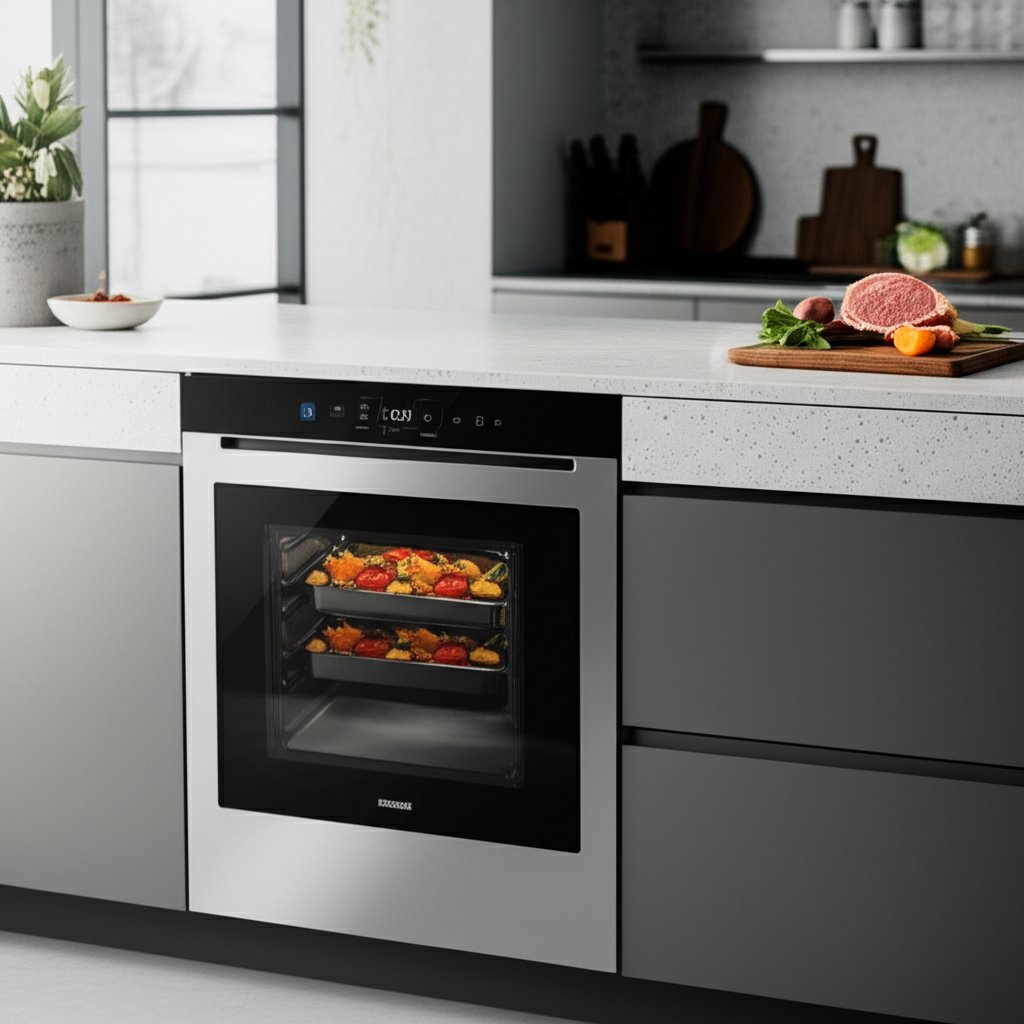Smart Ovens Cook Perfect Meals Using Food Scanning
Smart homes are moving from novelty to necessity, and nowhere is that shift more delicious than in the kitchen. The latest wave of smart ovens is using food scanning technology to recognize ingredients, set cooking times automatically, and promise perfectly prepared meals without the guesswork. For busy households and food lovers alike, this innovation is reimagining how we cook at home.
What Is Food Scanning in Smart Ovens
Food scanning combines built-in cameras, image recognition software, and intelligent sensors to identify what you place inside the oven. Whether it is a salmon filet, a tray of vegetables, or a frozen pizza, the oven can detect the type of food and adjust temperature, timing, and cooking method automatically. Instead of setting dials or following instructions on a box, you close the door and let the oven figure out the details.
This matters because most home cooks struggle with consistency. Overcooked chicken or undercooked baked goods are common frustrations. By automating these settings, food scanning ovens remove the uncertainty and help every cook, regardless of skill level, create results that taste like they came from a restaurant.
Why It Matters for Everyday Cooking
The appeal of food recognition is not just precision, but convenience. A recent consumer survey found that nearly half of people want appliances that simplify their daily routines. Cooking is one of the most time-consuming tasks at home, and automation can save both time and effort.
Imagine coming home after a long day, placing a piece of fish in the oven, and walking away. The oven scans it, decides the optimal temperature, and alerts you when it is ready. No more hovering, no need to check the timer every few minutes. This means less stress, fewer mistakes, and more consistent meals.
Examples of Smart Ovens Leading the Way
Several companies are already bringing this technology to market.
- June Oven uses built-in cameras to recognize dozens of foods, from cookies to steaks, and suggests cooking programs without any manual input.
- Tovala Smart Oven pairs scanning with meal kits, allowing users to scan a code and let the oven handle the rest.
- Brava Oven uses sensors and light cooking technology to deliver speed and precision, combined with food recognition for easy operation.
These devices show how food scanning is not just a futuristic idea, but a real shift in how kitchens operate.
The Lifestyle Benefits
Smart ovens with food scanning are not only about convenience, they are about reshaping daily living.
- Consistency: Meals come out the same way every time, whether you are cooking for one or for a family gathering.
- Confidence: Even beginners can prepare meals that turn out well, reducing the intimidation factor of cooking.
- Time Savings: No need to research recipes or monitor cooking. The oven makes decisions for you.
- Energy Efficiency: By optimizing cooking times, the oven avoids wasted power from overcooking or reheating.
For people who enjoy cooking, these ovens act as an assistant rather than a replacement. They handle the technical details while you focus on flavor, presentation, or simply enjoying your time.
Challenges to Adoption
Like many smart home innovations, smart ovens face barriers. Price is one factor, since they typically cost more than traditional ovens. Some users also prefer the control of manual cooking and may resist handing over decisions to a machine. Standards across different appliances can be inconsistent, which means not every device integrates seamlessly into an existing kitchen setup.
That said, as prices decrease and features expand, adoption is expected to grow. The demand for easier cooking is strong, and once people experience the convenience, it becomes hard to go back to manual settings.
What This Means for the Future Kitchen
The rise of food-scanning ovens is part of a bigger movement toward kitchens that think for us. Picture a space where your fridge suggests recipes based on what is inside, your oven scans and cooks those ingredients, and your dishwasher adjusts cycles based on the type of cookware you load. Step by step, the kitchen is evolving into a space that adapts around your lifestyle, not the other way around.
For consumers, this means preparing meals with less effort and more confidence. For families, it means healthier eating since fresh ingredients can be prepared correctly without requiring advanced cooking knowledge. For tech watchers, it signals another piece of the connected home puzzle falling into place.
Final Takeaway
Smart ovens that cook perfect meals using food scanning are more than an appliance upgrade, they are a preview of kitchens that work smarter, not harder. They make cooking more accessible, more reliable, and more enjoyable. Expect food recognition technology to become a standard feature in the next generation of appliances, and expect your kitchen to feel as intelligent as the rest of your connected home.
Tags: automated cooking, food recognition, kitchen innovation, cooking assistance
